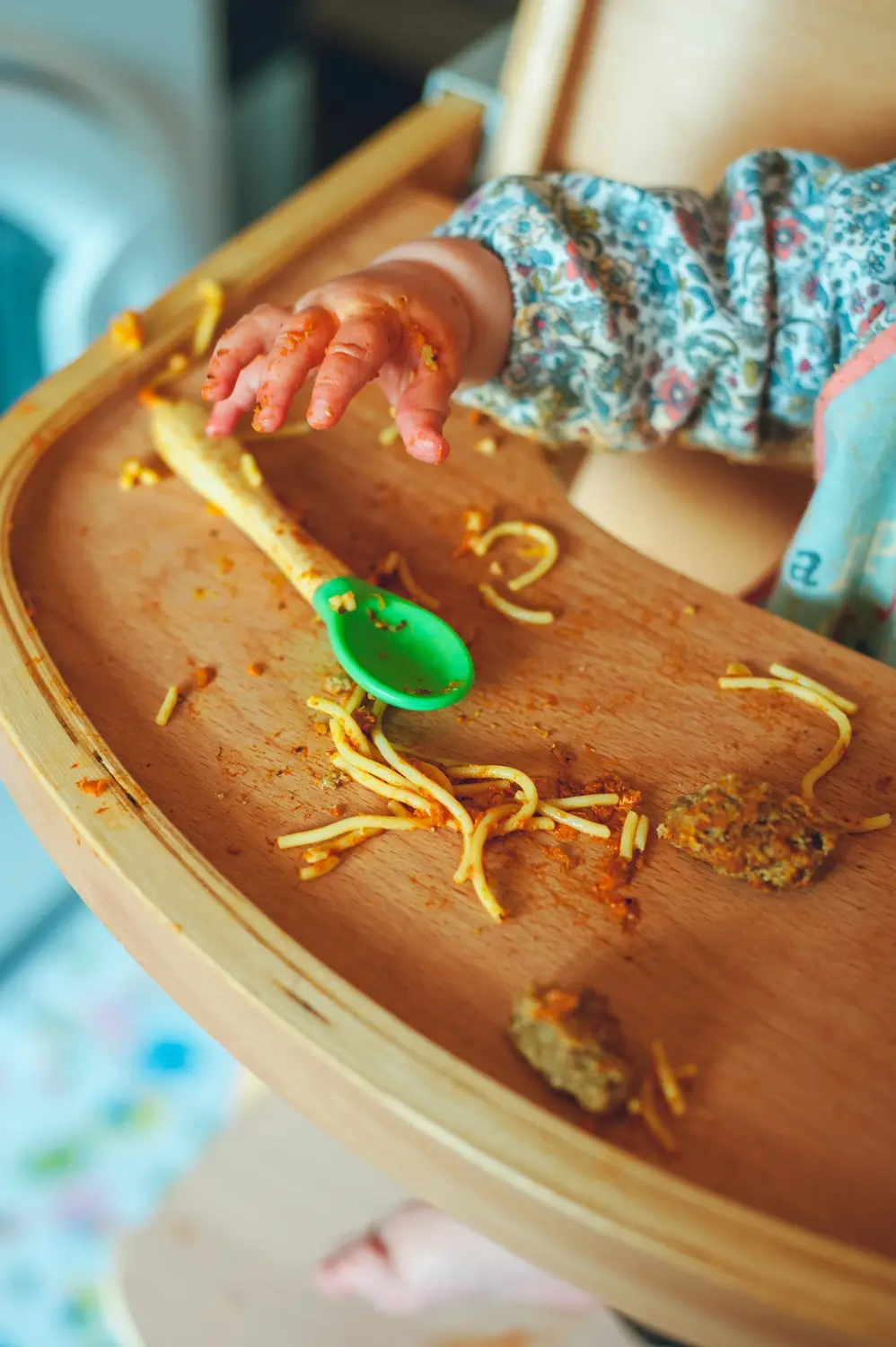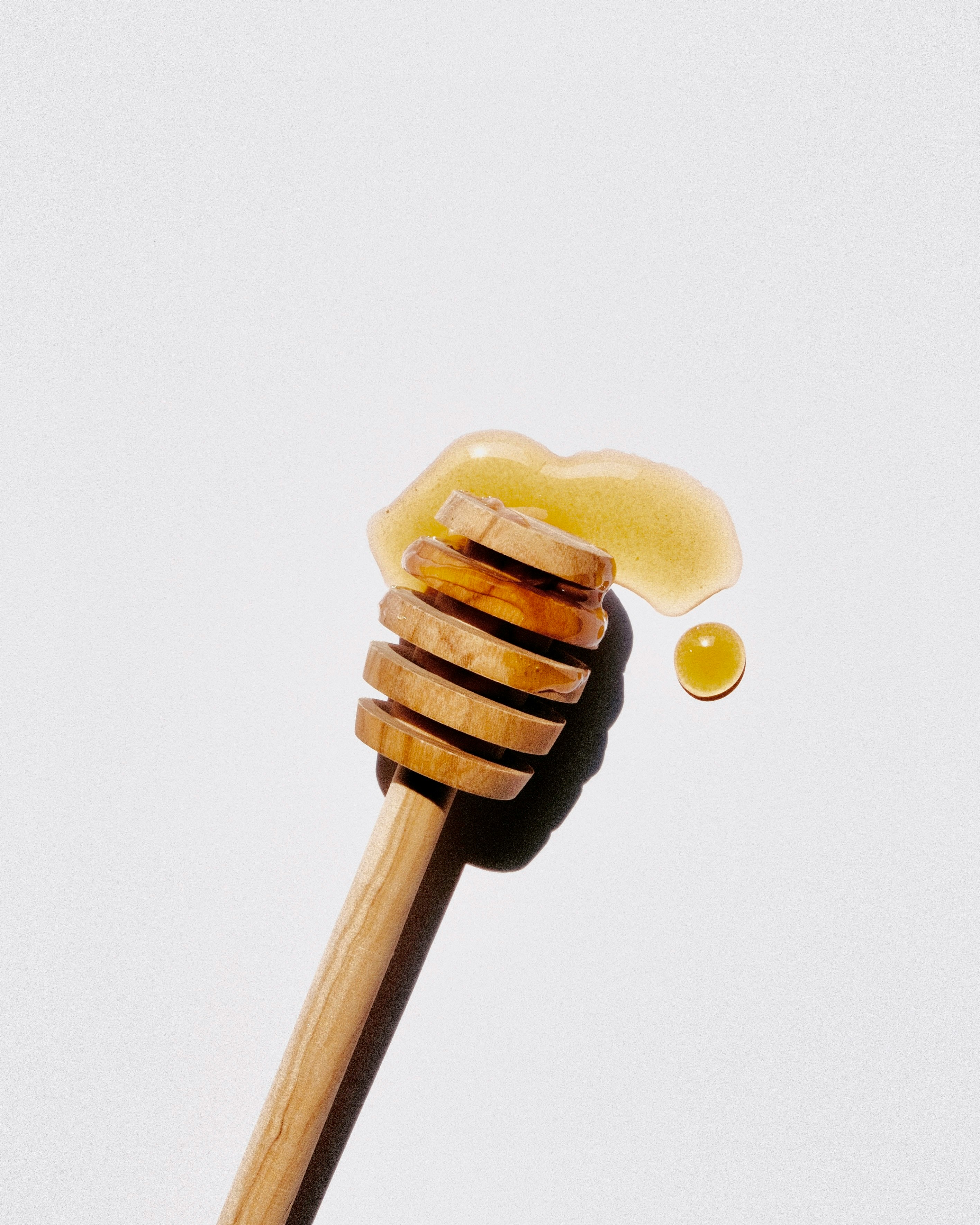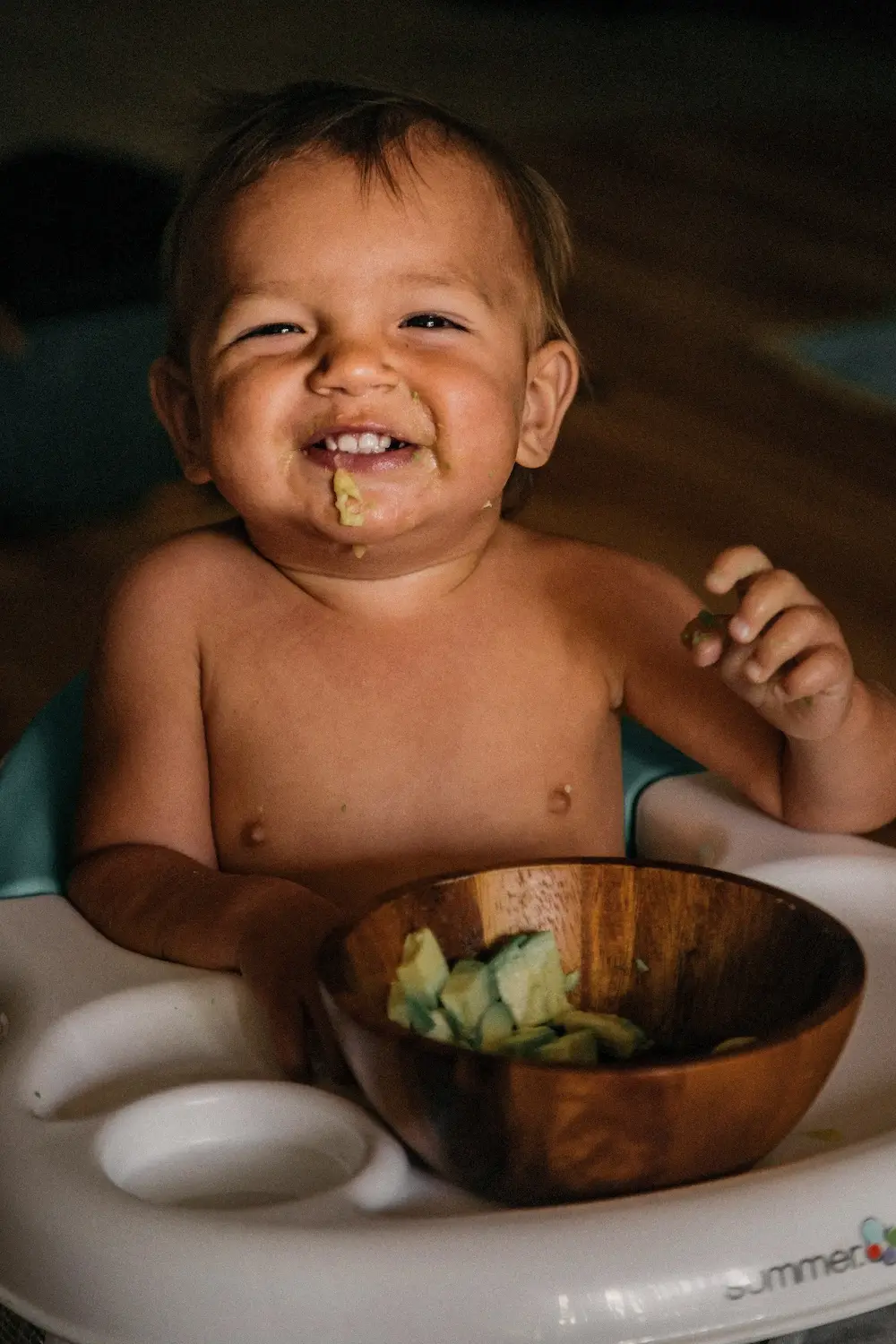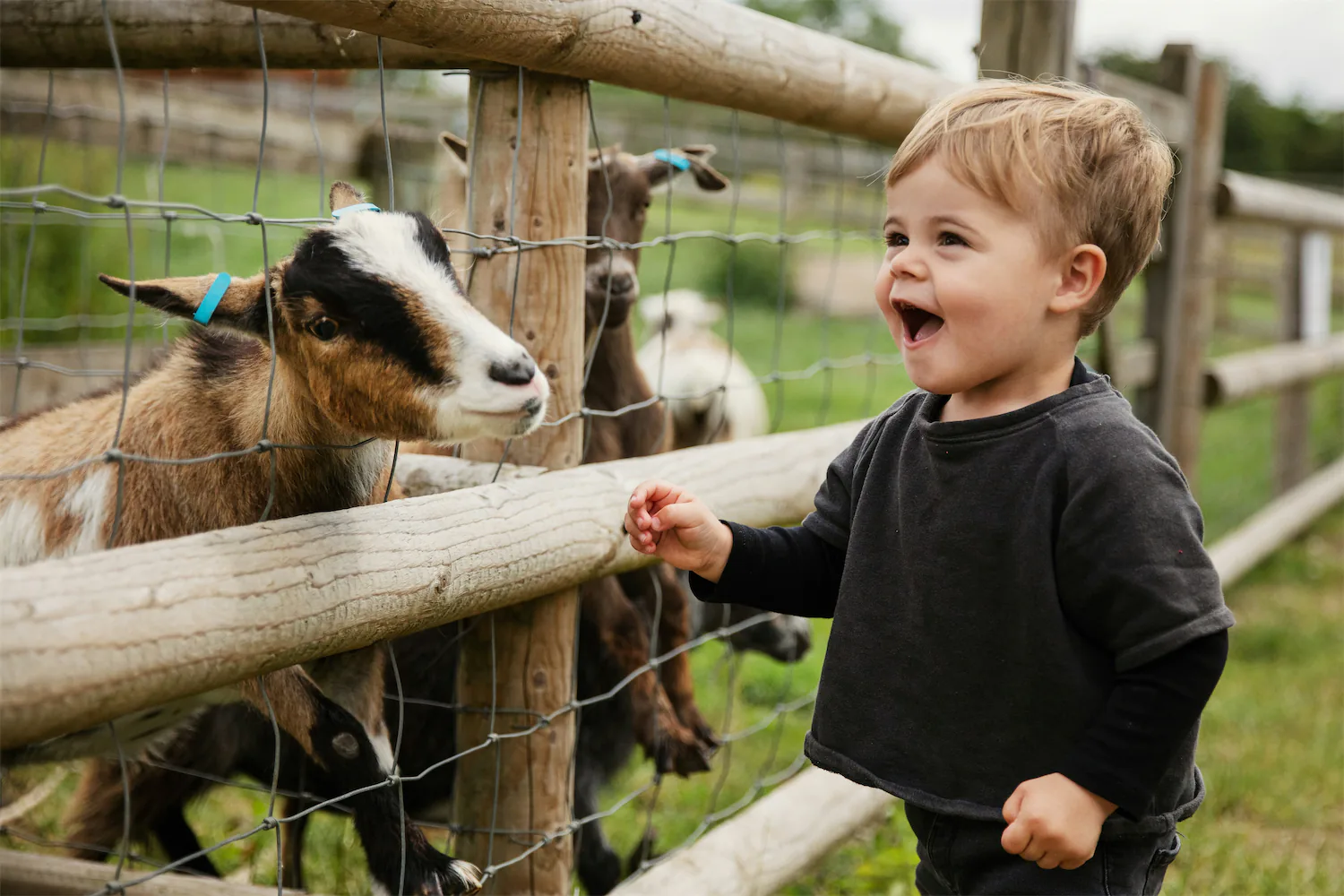Baby-led weaning: a modern parent's guide to starting solid foods
Baby-led weaning: a modern parent's guide to starting solid foods
Introducing solid foods to your baby is a thrilling adventure full of messy kitchens, memorable first bites, and those adorable avocado-covered smiles. While spoon-feeding purees has been the go-to method for many parents, there's a growing trend towards baby-led weaning (BLW), a method of starting solids in which babies explore finger foods on their own terms. To help you understand baby-led weaning, we've outlined everything you need to know in this guide. The Summer Health team is here to support you every step of the way.
Introducing solid foods to your baby is a thrilling adventure full of messy kitchens, memorable first bites, and those adorable avocado-covered smiles. While spoon-feeding purees has been the go-to method for many parents, there's a growing trend towards baby-led weaning (BLW), a method of starting solids in which babies explore finger foods on their own terms. To help you understand baby-led weaning, we've outlined everything you need to know in this guide. The Summer Health team is here to support you every step of the way.

Dahlia Rimmon, RDN
Content Writer

Nicole Silber, RD, CSP, CLC
Dietitian



What is baby-led weaning?
Baby led weaning is an approach to solid food where the baby takes the lead at mealtimes. Rather than spoon feeding purees, babies are encouraged to feed themselves, typically with finger foods. This method was first coined by Gill Rapley, a public health nurse in the U.K., and co-author of the book "Baby-led Weaning: The Essential Guide to Introducing Solid Foods ―and Helping Your Baby to Grow Up a Happy and Confident Eater". Rapley advocates for introducing solid foods with finger foods and skipping the puree and spoon feeding stage entirely, which fosters independence and a positive relationship with food.
It's worth mentioning that weaning doesn't imply weaning off breastmilk or formula. When babies begin eating solid foods, the majority of their nutrition needs should be met with milk feeds. In this context, weaning refers to the gradual shift from an exclusive diet of breastmilk or formula to one with the inclusion of solid foods.
When can a baby start baby-led weaning?
You can begin baby-led weaning when your baby is 6 months old and showing signs of developmental readiness. These signs include:
Your baby can sit with little support.
Your baby has steady head control.
Your baby is eagerly watching when you eat and seems interested in food.
Your baby has mastered bringing objects to their mouth.
It is important to ensure your baby shows these readiness signs for safety reasons. A baby who lacks steady head control or is wobbly in the highchair may not be in a safe and secure position to eat solid food.
Texture
While some advocates of BLW refuse to offer purees to their babies, purees actually serve an important purpose in introducing babies to various textures. Consider it this way: as adults, we frequently eat foods with a pureed consistency, ranging from soups and stews to yogurts and hot cereals. Plus, purees don’t have to be spoon-fed. Adopting a baby-led approach means allowing babies to guide the way, which can involve offering purees in creative ways. For example, you can pre-load a self-feeding spoon with puree for babies to self-feed, or serve thicker purees on a tray for babies to scoop up themselves, using foods like thick oatmeal or mashed potatoes.
Finger foods should be soft enough that you can easily squish them between your fingers. Good examples include ripe bananas or avocado, roasted sweet potatoes, or moist pieces of chicken. Avoid giving hard, sharp, gummy, or sticky foods (like thick, globby peanut butter), as they can be choking hazards.
Size and shape
When introducing finger foods, the goal is to offer options that babies can easily pick up. Since babies don’t develop the pincer grasp until they are 8 or 9 months old, they rely on their palmar grasp to pick up and hold food (using their whole hand). For babies under 8 months, finger-shaped foods or long spear-shaped pieces are easiest for babies to grab. When cutting food into spears, use your pinky finger as a guide for length. If the food is cut too short, it might get trapped in their palm, making it frustrating for them to eat. It should be long enough so that when babies hold the food in their palm, the ends stick out for them to easily eat and enjoy.
When your baby is around 8 or 9 months old, you may notice them practicing the pincer grasp. The pincer grasp is the ability to pick up small items, food in this case, with the index finger and thumb. At this age, you can start offering pea-sized pieces to help babies practice and strengthen this fine motor skill.
Stay away from small, round foods like whole blueberries, chickpeas, or grapes as they can pose a choking risk. These tiny, circular items can block the airway and may lead to true choking.
Benefits of baby-led weaning
There are many reasons why parents choose to begin solids with baby-led weaning, and some of the benefits include:
When babies start with finger foods, they can eat the same foods as their families. This inclusion allows babies to more naturally participate in the family meals and promotes a positive feeding experience.
Babies can strengthen their oral motor and fine motor skills by picking up and eating various textures.
Babies gain more independence and confidence in eating. Research suggests that increased independence around eating fosters a positive relationship with food and may reduce picky eating behaviors.
A baby-led approach encourages children to fine-tune their self regulation skills. Babies eat when they’re hungry and stop eating when they’re full. Babies will set the pace. This contrasts with parent-led feeding or spoon feeding, where the parent controls the flow of the feeding experience.
Finger foods offer a wide range of textures and mouthfeels, providing babies with valuable sensory experiences. Introducing a variety of textures to babies from the beginning allows them to practice maneuvering food in their mouths, mashing it with their gums, and utilizing their swallowing reflexes. This early exposure to diverse textures contributes to their overall oral motor development.
It's simple to get stuck in a puree routine, and the longer you wait, the more challenging it may be for your baby to transition to different textures.
Let's not overlook the perks for parents! When babies eat the same foods as you, it eliminates the need for separate meal preparations. No more making dinner and then dirtying extra dishes with the preparation of purees.
You'll save time, money, and energy because you won't have to make special baby food. Jarred baby food is pretty expensive!
BLW first foods
Below are some of our favorite foods to to kickstart baby-led weaning:
Scrambled eggs, cut into strips
Moist salmon flakes
Lightly toasted bread
Lightly toasted bread with different spreads like whole milk yogurt, thin spread of nut butter
Avocado
Roasted sweet potato
Muffins
Pancakes
Steamed broccoli
Steamed cauliflower
Roasted pear
Super ripe peach
Banana
Tips and tricks
Here are some friendly tips and tricks when starting baby-led weaning with your baby:
Try introducing solid foods roughly 30-90 minutes before or after a milk feed. The goal is to find the sweet spot when your baby is hungry enough for solids but not too full from milk.
Give a baby some food, and you're guaranteed to have a mess, but that's all part of the fun! Allow your baby to explore this new sensory experience. But even though it can get messy, there are ways to minimize it and cut down on cleanup time. Invest in an easy-to-clean highchair, some comfortable bibs, and consider using a splat mat or disposable tablecloth under the highchair to catch spills and crumbs.
Babies are excellent at regulating their hunger and fullness. They naturally eat when they're hungry and stop when they're full. Let them eat as much or as little as they want, and they'll give you cues when they're satisfied or still hungry. Hunger cues may include smacking their lips, sticking out their tongue, licking their lips, or showing interest in that uneaten sandwich on your plate. Fullness cues might involve turning their head away from the spoon, closing their mouth, or becoming fussy or irritable in the highchair.
Remember, babies don't eat a lot when they start solid foods. It's typical for them to only eat a few bites and then be finished with a meal. If your baby isn't showing much interest at first, don't worry too much. It takes time and practice for them to get the hang of it.
When preparing family meals, set aside a portion for your baby before adding salt or sugar. Babies should avoid excessive salt intake because they have developing kidneys, and it may be difficult to filter out excess salt. It's best to steer clear of foods with added sugars to promote healthy eating habits.
While babies can enjoy a wide variety of foods, it's important to be aware of exceptions. Honey, for instance, presents a serious risk of contamination with a toxic bacteria known as clostridium, which can lead to infant botulism, a potentially fatal condition. Always check product labels for honey, including heated or baked products with honey.
It's completely normal for babies to gag, make funny faces, or even spit out food during the first few days, or even months, of starting solids. This transition introduces them to a whole new sensory experience because up until this point, their diet consisted solely of milk. Solid food introduces a variety of flavors and textures that they're not used to yet. However, with repeated exposure, they’ll gradually become more accustomed to new tastes. Remember, it takes time and plenty of practice for them to adjust.
FAQs
Here are some commonly asked questions about baby-led weaning:
But, what about the risk of choking?
Always supervise your baby during meals. BLW can be done safely under supervision, but if you are worried about choking, you can start with purees. Fed is best, and it’s important to do what feels comfortable. You can introduce purees following a baby-led philosophy, by watching for hunger cues and allowing your baby to explore foods and participate in the feeding process.
Will my baby gag? That makes me nervous.
Your baby is likely to gag more frequently when beginning solid foods. Gagging is one of the body’s safety mechanisms that protects the airway. Sometimes, babies gag if they haven't chewed their food properly or if it’s an exposure to a new food. The gag reflex kicks in to protect the airway, and you may hear coughing and gurgling sounds. After a moment or two, the food usually comes back up. This can happen quite often, especially when babies are new to eating solids or trying new textures. Although it’s difficult not to panic, stay calm and trust that your baby's reflexes are doing their job!
Does my baby need teeth to chew finger foods?
Actually, no! We use our molars to chew, and molars come in well after the first birthday. Babies have really strong gums that are perfectly capable of mashing food for digestion.
What's wrong with spoon feeding?
Absolutely nothing. Baby-led weaning isn't the ONLY feeding method, and spoon feeding purees is perfectly OK too.
The only iron-rich food my baby likes is iron-fortified infant cereal. How can I prepare it in BLW style?
Our favorite way to serve iron-fortified infant cereal is to mix it with steel cut oatmeal. Oatmeal has a super thick consistency and babies can self feed by scooping it up on their own. You can also add it into whisked eggs before scrambling, or into pancake batter.
What if my baby refuses baby-led weaning foods?
It takes time and practice for babies to familiarize themselves with any new food or texture - puree or baby led weaning food included! Continue to give them many opportunities to practice.
What is baby-led weaning?
Baby led weaning is an approach to solid food where the baby takes the lead at mealtimes. Rather than spoon feeding purees, babies are encouraged to feed themselves, typically with finger foods. This method was first coined by Gill Rapley, a public health nurse in the U.K., and co-author of the book "Baby-led Weaning: The Essential Guide to Introducing Solid Foods ―and Helping Your Baby to Grow Up a Happy and Confident Eater". Rapley advocates for introducing solid foods with finger foods and skipping the puree and spoon feeding stage entirely, which fosters independence and a positive relationship with food.
It's worth mentioning that weaning doesn't imply weaning off breastmilk or formula. When babies begin eating solid foods, the majority of their nutrition needs should be met with milk feeds. In this context, weaning refers to the gradual shift from an exclusive diet of breastmilk or formula to one with the inclusion of solid foods.
When can a baby start baby-led weaning?
You can begin baby-led weaning when your baby is 6 months old and showing signs of developmental readiness. These signs include:
Your baby can sit with little support.
Your baby has steady head control.
Your baby is eagerly watching when you eat and seems interested in food.
Your baby has mastered bringing objects to their mouth.
It is important to ensure your baby shows these readiness signs for safety reasons. A baby who lacks steady head control or is wobbly in the highchair may not be in a safe and secure position to eat solid food.
Texture
While some advocates of BLW refuse to offer purees to their babies, purees actually serve an important purpose in introducing babies to various textures. Consider it this way: as adults, we frequently eat foods with a pureed consistency, ranging from soups and stews to yogurts and hot cereals. Plus, purees don’t have to be spoon-fed. Adopting a baby-led approach means allowing babies to guide the way, which can involve offering purees in creative ways. For example, you can pre-load a self-feeding spoon with puree for babies to self-feed, or serve thicker purees on a tray for babies to scoop up themselves, using foods like thick oatmeal or mashed potatoes.
Finger foods should be soft enough that you can easily squish them between your fingers. Good examples include ripe bananas or avocado, roasted sweet potatoes, or moist pieces of chicken. Avoid giving hard, sharp, gummy, or sticky foods (like thick, globby peanut butter), as they can be choking hazards.
Size and shape
When introducing finger foods, the goal is to offer options that babies can easily pick up. Since babies don’t develop the pincer grasp until they are 8 or 9 months old, they rely on their palmar grasp to pick up and hold food (using their whole hand). For babies under 8 months, finger-shaped foods or long spear-shaped pieces are easiest for babies to grab. When cutting food into spears, use your pinky finger as a guide for length. If the food is cut too short, it might get trapped in their palm, making it frustrating for them to eat. It should be long enough so that when babies hold the food in their palm, the ends stick out for them to easily eat and enjoy.
When your baby is around 8 or 9 months old, you may notice them practicing the pincer grasp. The pincer grasp is the ability to pick up small items, food in this case, with the index finger and thumb. At this age, you can start offering pea-sized pieces to help babies practice and strengthen this fine motor skill.
Stay away from small, round foods like whole blueberries, chickpeas, or grapes as they can pose a choking risk. These tiny, circular items can block the airway and may lead to true choking.
Benefits of baby-led weaning
There are many reasons why parents choose to begin solids with baby-led weaning, and some of the benefits include:
When babies start with finger foods, they can eat the same foods as their families. This inclusion allows babies to more naturally participate in the family meals and promotes a positive feeding experience.
Babies can strengthen their oral motor and fine motor skills by picking up and eating various textures.
Babies gain more independence and confidence in eating. Research suggests that increased independence around eating fosters a positive relationship with food and may reduce picky eating behaviors.
A baby-led approach encourages children to fine-tune their self regulation skills. Babies eat when they’re hungry and stop eating when they’re full. Babies will set the pace. This contrasts with parent-led feeding or spoon feeding, where the parent controls the flow of the feeding experience.
Finger foods offer a wide range of textures and mouthfeels, providing babies with valuable sensory experiences. Introducing a variety of textures to babies from the beginning allows them to practice maneuvering food in their mouths, mashing it with their gums, and utilizing their swallowing reflexes. This early exposure to diverse textures contributes to their overall oral motor development.
It's simple to get stuck in a puree routine, and the longer you wait, the more challenging it may be for your baby to transition to different textures.
Let's not overlook the perks for parents! When babies eat the same foods as you, it eliminates the need for separate meal preparations. No more making dinner and then dirtying extra dishes with the preparation of purees.
You'll save time, money, and energy because you won't have to make special baby food. Jarred baby food is pretty expensive!
BLW first foods
Below are some of our favorite foods to to kickstart baby-led weaning:
Scrambled eggs, cut into strips
Moist salmon flakes
Lightly toasted bread
Lightly toasted bread with different spreads like whole milk yogurt, thin spread of nut butter
Avocado
Roasted sweet potato
Muffins
Pancakes
Steamed broccoli
Steamed cauliflower
Roasted pear
Super ripe peach
Banana
Tips and tricks
Here are some friendly tips and tricks when starting baby-led weaning with your baby:
Try introducing solid foods roughly 30-90 minutes before or after a milk feed. The goal is to find the sweet spot when your baby is hungry enough for solids but not too full from milk.
Give a baby some food, and you're guaranteed to have a mess, but that's all part of the fun! Allow your baby to explore this new sensory experience. But even though it can get messy, there are ways to minimize it and cut down on cleanup time. Invest in an easy-to-clean highchair, some comfortable bibs, and consider using a splat mat or disposable tablecloth under the highchair to catch spills and crumbs.
Babies are excellent at regulating their hunger and fullness. They naturally eat when they're hungry and stop when they're full. Let them eat as much or as little as they want, and they'll give you cues when they're satisfied or still hungry. Hunger cues may include smacking their lips, sticking out their tongue, licking their lips, or showing interest in that uneaten sandwich on your plate. Fullness cues might involve turning their head away from the spoon, closing their mouth, or becoming fussy or irritable in the highchair.
Remember, babies don't eat a lot when they start solid foods. It's typical for them to only eat a few bites and then be finished with a meal. If your baby isn't showing much interest at first, don't worry too much. It takes time and practice for them to get the hang of it.
When preparing family meals, set aside a portion for your baby before adding salt or sugar. Babies should avoid excessive salt intake because they have developing kidneys, and it may be difficult to filter out excess salt. It's best to steer clear of foods with added sugars to promote healthy eating habits.
While babies can enjoy a wide variety of foods, it's important to be aware of exceptions. Honey, for instance, presents a serious risk of contamination with a toxic bacteria known as clostridium, which can lead to infant botulism, a potentially fatal condition. Always check product labels for honey, including heated or baked products with honey.
It's completely normal for babies to gag, make funny faces, or even spit out food during the first few days, or even months, of starting solids. This transition introduces them to a whole new sensory experience because up until this point, their diet consisted solely of milk. Solid food introduces a variety of flavors and textures that they're not used to yet. However, with repeated exposure, they’ll gradually become more accustomed to new tastes. Remember, it takes time and plenty of practice for them to adjust.
FAQs
Here are some commonly asked questions about baby-led weaning:
But, what about the risk of choking?
Always supervise your baby during meals. BLW can be done safely under supervision, but if you are worried about choking, you can start with purees. Fed is best, and it’s important to do what feels comfortable. You can introduce purees following a baby-led philosophy, by watching for hunger cues and allowing your baby to explore foods and participate in the feeding process.
Will my baby gag? That makes me nervous.
Your baby is likely to gag more frequently when beginning solid foods. Gagging is one of the body’s safety mechanisms that protects the airway. Sometimes, babies gag if they haven't chewed their food properly or if it’s an exposure to a new food. The gag reflex kicks in to protect the airway, and you may hear coughing and gurgling sounds. After a moment or two, the food usually comes back up. This can happen quite often, especially when babies are new to eating solids or trying new textures. Although it’s difficult not to panic, stay calm and trust that your baby's reflexes are doing their job!
Does my baby need teeth to chew finger foods?
Actually, no! We use our molars to chew, and molars come in well after the first birthday. Babies have really strong gums that are perfectly capable of mashing food for digestion.
What's wrong with spoon feeding?
Absolutely nothing. Baby-led weaning isn't the ONLY feeding method, and spoon feeding purees is perfectly OK too.
The only iron-rich food my baby likes is iron-fortified infant cereal. How can I prepare it in BLW style?
Our favorite way to serve iron-fortified infant cereal is to mix it with steel cut oatmeal. Oatmeal has a super thick consistency and babies can self feed by scooping it up on their own. You can also add it into whisked eggs before scrambling, or into pancake batter.
What if my baby refuses baby-led weaning foods?
It takes time and practice for babies to familiarize themselves with any new food or texture - puree or baby led weaning food included! Continue to give them many opportunities to practice.
References
JAMA Pediatrics: Effect of a Baby-Led Approach to Complementary Feeding on Infant Growth and Overweight - A Randomized Clinical Trial
American Academy of Pediatrics: A Baby-Led Approach to Eating Solids and Risk of Choking
JAMA Pediatrics: Effect of a Baby-Led Approach to Complementary Feeding on Infant Growth and Overweight - A Randomized Clinical Trial
American Academy of Pediatrics: A Baby-Led Approach to Eating Solids and Risk of Choking
JAMA Pediatrics: Effect of a Baby-Led Approach to Complementary Feeding on Infant Growth and Overweight - A Randomized Clinical Trial
American Academy of Pediatrics: A Baby-Led Approach to Eating Solids and Risk of Choking
Summer Health offers fast and reliable pediatric urgent care through online doctors, all via text. Whether you’re worried about your baby's fever, rashes, or other children's health concerns, we provide expert advice and support anytime, right from your phone.

Never miss a post!
Sign up for our newsletter to receive articles and guides directly to your inbox!












